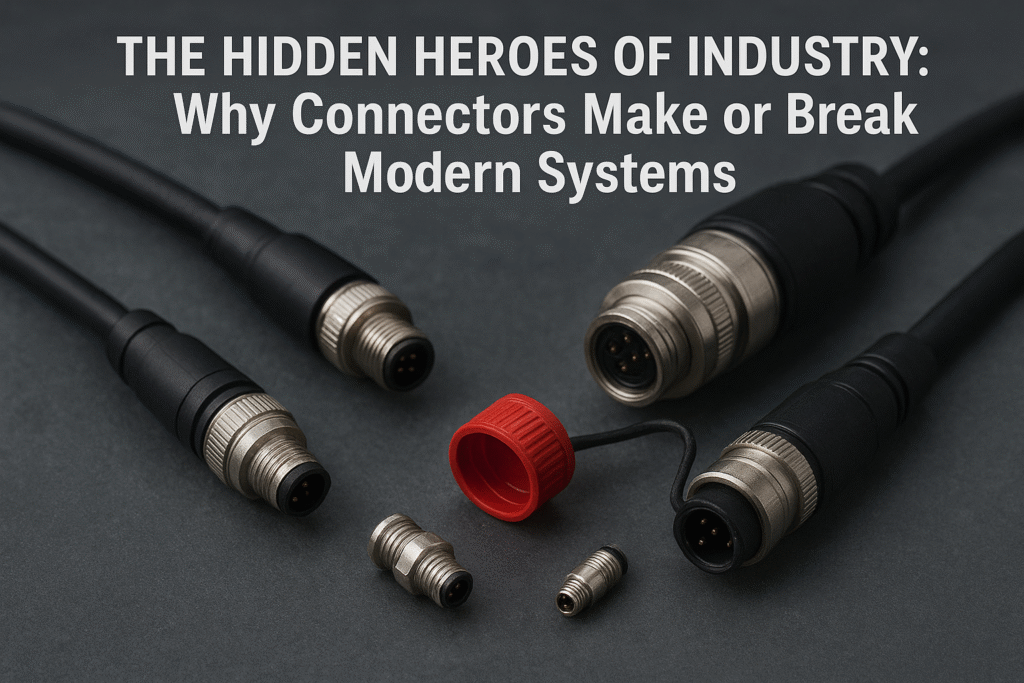
Connectors might look like small, unimportant parts compared to million-dollar machines. But when they fail, entire systems can grind to a halt. A HelioVolta study in the solar energy industry revealed a shocking truth: more than 80% of installations had connector-related faults. Nearly half required urgent repairs, and some were forced into full shutdowns.
The lesson? Connectors are the unsung heroes or silent saboteurs of industrial technology.
When Small Mistakes Create Big Failures
From smart agriculture to renewable energy, from distributed power systems to satellite communications, today’s equipment works in some of the harshest conditions imaginable. And at the frontline of these environments are connectors.
They carry power, data, and signals while being exposed to vibration, dust, moisture, and even UV radiation. Poor design, wrong choice of connector, or sloppy installation can lead to failure modes that damage the entire system. Worse, these failures are almost always preventable.
IP Ratings: Your First Line of Defense
Choosing a rugged connector isn’t guesswork—it’s science. The Ingress Protection (IP) rating system makes it easier to match connectors to real-world environments.
- IP67 connectors can survive immersion in up to 1 meter of water for 30 minutes. Perfect for exposed equipment but not long-term underwater use.
- IP68 connectors go further. They’re designed for prolonged immersion beyond 1 meter, with seals built to withstand higher pressure.
The difference is huge—not only in performance but also in cost. If your system won’t face long-term submersion, there’s no need to over-engineer with expensive IP68 models. The key is aligning your choice with the actual operating environment.
Mating Matters More Than You Think
Even the toughest connector is worthless if it isn’t installed correctly. Water damage alone is blamed for around 20% of all electronic failures, and connectors are often the weak spot.
Misaligned threads, dirt, worn O-rings—tiny oversights can destroy protection. And here’s a detail many miss: most connectors are only waterproof when mated. If left unplugged, their defenses drop unless they have sealed housings or protective caps.
In short: follow manufacturer instructions and treat mating as a precision task, not an afterthought.
Smarter Choices: The Stewart Connector M-Series
So how do designers and engineers choose wisely? Stewart Connector’s M-Series offers solutions tailored for different environments and needs:
- M5 connectors – Ultra-compact, sealed, and vibration-resistant. Perfect for small sensors or space-constrained PCBs.
- M8 connectors – Flexible and versatile. They handle signal, data, and low-current power with optional metal dust caps for unmated protection.
- M12 connectors – Heavy-duty workhorses. D-coded variants support Ethernet and industrial automation; K-coded options deliver high-current power for motors and actuators.
All Stewart M-Series connectors come IP-rated, meaning designers can build modular, scalable, and reliable systems without compromising protection.
The Bigger Picture: Connectors as Core Components
Too often, connectors are treated as an afterthought in design. But every system is only as strong as its weakest link.
- Choose connectors matched to the actual operating conditions.
- Respect IP ratings and don’t overspend where it’s unnecessary.
- Install and mate carefully to avoid preventable failures.
In industrial technology, reliability isn’t optional—it’s survival. And sometimes, the difference between uptime and downtime comes down to something as small as a connector.
Sources
https://www.heliovolta.com/resources/connector-white-paper
https://ieeexplore.ieee.org/document/5422477